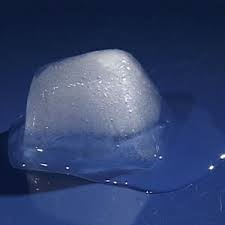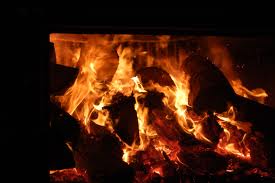Overview:
Matter can undergo many types of changes. Physical changes to a substance do not change its chemical composition, while chemical changes to a substance change its chemical composition. Compare the difference between chopping wood, which breaks it into pieces and changes its physical composition, with burning wood, which changes its chemical composition.
Changes in State
The H2O molecules that form water can be changed from one physical state to another, such as from ice crystals to liquid water to water vapor. The molecules themselves do not change when the water changes state. Many substances are normally found in one state or another, but can change their state. For example, nitrogen is usually found as a gas but can be cooled as liquid nitrogen.
Changes in Size or Shape
Changes in size or shape are also physical changes. For example, a metal such as copper can be hammered into sheets or drawn out in long wires without changing its chemical composition. Similarly, a large piece of cloth can be cut into smaller pieces and sewn into a quilt, changing the size and shape of the cloth. A ball of molten glass can be blown into a vase or poured into a mold to form a glass bowl. Some metals can be heated and cooled without changing their chemical composition, such as platinum. When a change in state occurs, there is also a difference in size and shape. Compare an ice cube with the puddle it forms when it melts. Similarly, compare the size of a canister of liquid nitrogen with a container to hold the same volume of nitrogen gas.
|
Figure 1: As ice melts, into a puddle of water with the same chemical composition, it changes its size and shape. This is an example of a physical change. |
Chemical Changes
Chemical changes occur when the change results in a new substance. For example, common table salt (NaCl) is formed when sodium and chlorine undergo a chemical reaction to produce it. Similarly, if the copper in the wire combines with the oxygen in the air, it rusts, and a new chemical substance, copper oxide, is formed.
Physical and Chemical Changes Combined
When chemical changes occur, there are usually physical changes in the size, shape, and appearance of the substance. For example, the shiny, bright copper wire that rusts changes to a powdery substance, and the burning wood changes to ashes, carbon dioxide, and water. It has a different chemical composition as well as a different physical appearance.
|
Figure 2: Burning wood changes to ashes, carbon dioxide, and water; a different chemical composition as well as physical appearance. |
Interested in chemistry tutoring services? Learn more about how we are assisting thousands of students each academic year.
SchoolTutoring Academy is the premier educational services company for K-12 and college students. We offer tutoring programs for students in K-12, AP classes, and college. To learn more about how we help parents and students in Springfield, MO: visit Tutoring in Springfield, MO



